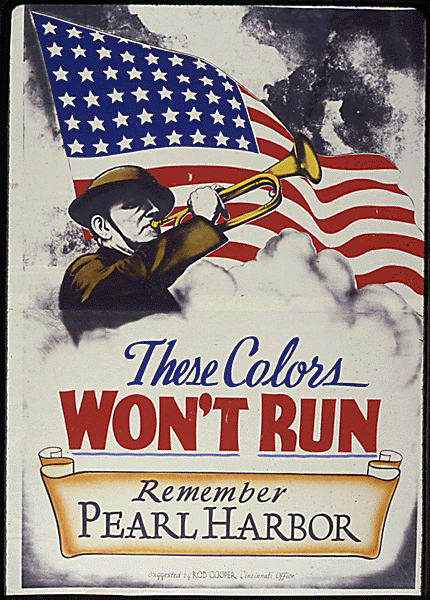Debate views: 8,514
Debate Summary
The military history of the United States during World War II covers the war against Japan, Germany and Italy starting with the 7 December 1941 attack on Pearl Harbor. During the first 2 years of the global conflict, the United States had maintained formal neutrality, while supplying Britain, the Soviet Union and China with war material through Lend-Lease, as well as deploying the US military to replace the British invasion forces in Iceland (for early US combat activity in the Pacific Theater, see the Flying Tigers). During the war over 16 million Americans served in the United States military, with 290,000 killed in action and 670,000 wounded. Key civilian advisors to President Franklin D. Roosevelt included Secretary of War Henry Stimson, who mobilized the nation's industries and induction centers to supply the Army, commanded by Gen. George C. Marshall and the Air Force under Gen. Hap Arnold. The Navy, led by Admiral Ernest King, proved more autonomous. Overall priorities were set by Roosevelt and the Joint Chiefs, chaired by William D. Leahy. Highest priority went to the defeat of Germany in Europe, but first the war against Japan in the Pacific was more urgent after the sinking of the main battleship fleet at Pearl Harbor.
Adm. King put Adm. Chester W. Nimitz, based in Hawaii, in charge of the Central Pacific war against Japan. The result was a series of some of the most famous naval battles in history. The Imperial Japanese Navy had the advantage, taking the Philippines as well as British and Dutch possessions and threatening Australia, In June 1942, its main carriers were sunk at Midway, and the Americans seized the initiative. The Pacific war became one of island hopping, so as to move air bases closer and closer to Japan. The Army, based in Australia under Gen. Douglas MacArthur, steadily advanced across New Guinea to the Philippines, with plans to invade the home islands in late 1945. With its merchant fleet sunk by American submarines, Japan ran short of aviation gasoline and fuel oil, as the U.S. Navy in June 1944 captured islands within bombing range of Tokyo. Strategic bombing directed by Gen. Curtis Lemay destroyed all the major cities, as the U.S. captured Okinawa after heavy losses in spring 1945. With conventional and atomic bombs falling, an invasion imminent, and an unexpected Russian attack in August, Japan surrendered.
The war against Germany involved aid to Britain and the Soviet Union, with the U.S. supplying munitions until it could ready an invasion army. Taking the lead but working closely with Britain, the U.S. invaded North Africa and Italy in 1942-43, but then bogged down after Italy surrendered and the Germans took over Italy. Finally the main invasion of France took place in June 1944, under Gen. Dwight D. Eisenhower. Meanwhile the Air Force systematically targeted German transportation links and synthetic oil plants, as it knocked out the Luftwaffe in 1944. With the Soviets unstoppable in the east, and the Allies unstoppable in the west, Germany was squeezed to death. Berlin fell to the Soviets in May 1945, and with Hitler dead the Germans surrendered.
The military effort was strongly supported by civilians on the home front, who provided the soldiers, the munitions, the money and the morale to fight the war to victory.
Should the United States have entered World War II?
Tags:
Sources
Top Debate Answers
There are currently no TOP DEBATE ANSWERS for this debate.
Lettuce (Pro)
Yes
Green Lettuce
While debating, choose the Green Lettuce side for Pro (if you are in favor of the debate.)
Number of lettuce debate answers: 0
Cabbage (Con)
No
Red Cabbage
While debating, choose the Red Cabbage side for Con (if you are in opposition of the debate.)
Number of cabbage debate answers: 0



